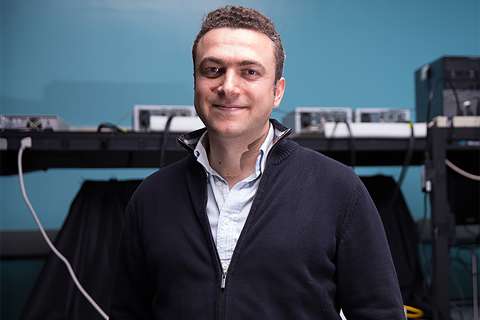A better way of diagnosing and treating ovarian cancer is on the horizon. Dr. Sanaz Memarzadeh, a UCLA professor in obstetrics and gynecology and member of the UCLA Jonsson Comprehensive Cancer Center, is convinced of it. She and her colleagues are focused on discovering why epithelial ovarian cancer, one of the most common and aggressive subtypes of the disease, often reoccurs despite standard treatment.
Through a collaborative effort at UCLA, researchers are trying to restore the function of a key protein – known as p53 -- that is commonly mutated in ovarian cancer. Memarzadeh and her collaborators are testing whether this approach, coupled with standard therapies, can prevent recurrence of ovarian cancer.
“My lab and I have really dedicated our focus and efforts to studying this disease,” said Memarzadeh, who is also a member of the Eli and Edythe Broad Center of Regenerative Medicine and Stem Cell Research at UCLA. “By studying the biology of some of the most aggressive subtypes, we’re hoping to one day soon make a real difference in how we approach and treat ovarian cancer.”
Such commitment is vital. Although ovarian cancer is often considered a relatively rare cancer – accounting for only about 3 percent of all cancers in women – it causes more deaths than any other cancer of the female reproductive system. It’s also the fifth-leading cause of cancer death in the United States.
In September, also known as Ovarian Cancer Awareness Month, share these five facts with your friends and family:
- Ovarian cancer can’t be easily detected.
Ovarian tumors are responsible for a disproportionately large number of gynecologic cancer-related deaths, because no test can reliably detect the disease at an early stage, when it’s most easily treatable.
- Warning signs are often mistaken for more common illnesses.
The symptoms of ovarian cancer (such as feeling bloated or full, having stomach pain or trouble eating, and needing to urinate often) resemble other common ailments, which further impedes early detection.
- Treatment options for ovarian cancer are evolving and need to improve
For more than 40 years, ovarian cancer treatments, including surgery followed by chemotherapy, have remained largely the same. More recently new targeted agents are being incorporated into treatment regimens.
- Genetics can play a role.
Epithelial ovarian cancer, the most common type, occurs most often in women ages 50 to 65, sometimes running in families. Genetic testing for two genes typically associated with breast and ovarian cancer – BRCA1, BRCA2 and others – is recommended for those who have a strong family history of breast or ovarian cancers.
- More funding is needed to find better treatments for ovarian cancer.
Ovarian cancer is particularly underfunded and understudied compared with other cancers. For example, in 2016, the National Cancer Institute invested $95.6 million in ovarian cancer research. That investment was 60 percent less than prostate cancer research (which received $241 million) and 82 percent less than breast cancer research (which received $519.9 million), which kills a proportionally fewer number of people who are diagnosed.




